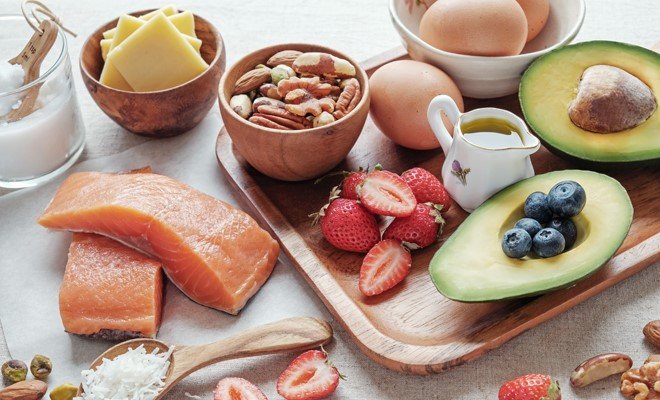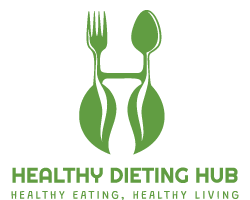
Cholesterol is a sticky substance produced by the liver and contained in some foods. It is needed to make vitamin D and some hormones, build cell membranes, and create bile salts that help digest fat. In fact, your liver produces about 1,000 milligrams (1 gram) of cholesterol a day, enough that you won’t have to eat a single cheese chip in your life. But it is difficult to completely avoid cholesterol , since it can be found in different foods.
One of the reasons why you have high cholesterol is due to maintaining an unhealthy lifestyle such as diet, excess tobacco or alcohol, and lack of physical activity. Another very common factor can be genetics, familial hypercholesterolemia is one of the ways of inheriting high cholesterol.
W are going to tell you, with the collaboration of the nutritionist Berenice Figueroa Cruz from Doctor anytime, what foods are used to reduce cholesterol as well as some tips to eat healthy . Do not lose detail!
What exactly is cholesterol?
Lipids are fats found throughout the body. Cholesterol is a type of lipid found in foods of animal origin. This means that eggs, meats, and all whole milk derivatives (such as milk itself, cheese, and ice cream) are loaded with cholesterol, and vegetables , fruits, and grains are cholesterol-free.
In addition to the 1,000 milligrams of cholesterol that the liver produces each day, a person probably gets between 150 and 250 milligrams of cholesterol per day from food.
Because cholesterol cannot travel through the bloodstream on its own, it must be combined with certain proteins that act as a vehicle, picking up cholesterol and transporting it to different parts of the body . When this happens, the cholesterol and protein form a lipoprotein.
Now, the two most important lipoproteins are high-density lipoprotein (HDL) and low-density lipoprotein (LDL). You’ve probably heard that people call LDL cholesterol “bad cholesterol” and HDL cholesterol “good cholesterol” because of their different effects on the body .
The reason it is known as high level is because it leads to a buildup of plaque in the arteries, which can lead to problems with cardiovascular health. Additionally, the very low intensity lipoprotein VLDL is also classified as bad cholesterol because it also contributes to the accumulation of plaque in the arteries. However, LDL and VLDL are different, the first is responsible for carrying cholesterol and the second for transporting triglycerides.
Cholesterol lowering foods
Functional foods are considered to be those foods that, in addition to providing health benefits, have substances whose daily consumption helps keep the body healthy and improve general well-being.
In the case of functional foods incorporated into a healthy diet , in those who suffer from hypercholesterolemia, but without inadequate eating habits, smoking or alcoholism, they can successfully achieve the main objective; lowering plasma lipid levels . Especially in dyslipidemia patients who do not tolerate treatment with statins and fibrates, or manifest liver disease with elevated transaminases.
Nuts
A diet containing nuts such as walnuts or almonds, among others , can help reduce the risk of heart complications in people with a history or underlying diseases.
Oatmeal and high-fiber foods
Foods rich in soluble fiber help reduce the passage of cholesterol into the bloodstream. Oatmeal is one of the foods that contains soluble fiber, so it helps reduce low-intensity protein (LDL). Additionally pears, apples, raisins and beans , among others, also contain fibers.
Avocado
Avocado, in addition to being one of the richest foods in flavor, is a powerful source of nutrients and monounsaturated fatty acids (MUFA). Adding a slice of avocado to a sandwich in the morning or to a salad can help improve LDL cholesterol levels, especially in overweight people.
Fish
Thanks to its high levels of omega 3 fatty acids, it can reduce blood pressure and the risk of generating blood clots. According to the American Heart Association, eating two servings of fish a week is recommended to support health. Omega 3 can be found in albacore tuna, salmon, sardines, river trout, cold and deep water fish. Among these fish are: tuna, mackerel, sardine, salmon, trout, gatuzo and threshing. Shellfish also contain omega 3 (mussels, oysters, cockles, etc.).
Cocoa
Cocoa is precisely one of the foods that is characterized by containing a high proportion of flavonoids. Natural antioxidants such as tocopherols, tocotrienols, carotenoids and flavonoids are widely distributed polyphenols in the plant kingdom. Although there are few foods that contain appreciable amounts of these compounds.
Additional Recommendations for Lowering Cholesterol
The 2010 Dietary Guidelines in the US recommend that the daily intake of cholesterol be less than 300 milligrams, the intake of fats should be between 25 and 35% of the total calories ingested, the intake of saturated fats should be 10 % or less of total calories eaten and trans fat, as low as possible. But we are going to give you some more recommendations:
Maintain a healthy weight. Regular aerobic exercise (activities like biking, walking, and swimming) strengthens your heart, lowers your cholesterol, and helps you lose weight (if needed).
Follow a diet that contains many low-cholesterol foods: fruits, vegetables, whole grains (such as bread and breakfast cereals ), legumes (such as navy beans), and fish. In addition to a low consumption of saturated fats and trans fats. Replace saturated and trans fats with unsaturated fats . It is recommended that you use liquid vegetable oil or margarine without trans fats instead of butter, shortening or margarine with trans fats. Avoid foods that contain hydrogenated vegetable oils.
-Use lean meat or skinless poultry . It is necessary to eliminate the fat that it contains before cooking it and to remove from the pan the fat that remains after having cooked it.
-Instead of frying foods, try boiling, grilling, baking, poaching , steaming, or sautéing them.
-Use margarine without trans fats.
-Use different protein sources such as fish , legumes (such as white beans and peas), nuts, tofu and soy products.
-Instead of eating whole eggs, try eating only egg whites or products sold as egg substitutes that are cholesterol-free.
–Do not eat industrially manufactured baked goods that are often made with hydrogenated oils or Trans fats.
In case you don’t feel confident when carrying out your diet plan, you can consult a specialist such as a nutritionist to know the foods to lower cholesterol. It is also important to check that your cholesterol levels are good to plan your diet correctly.


